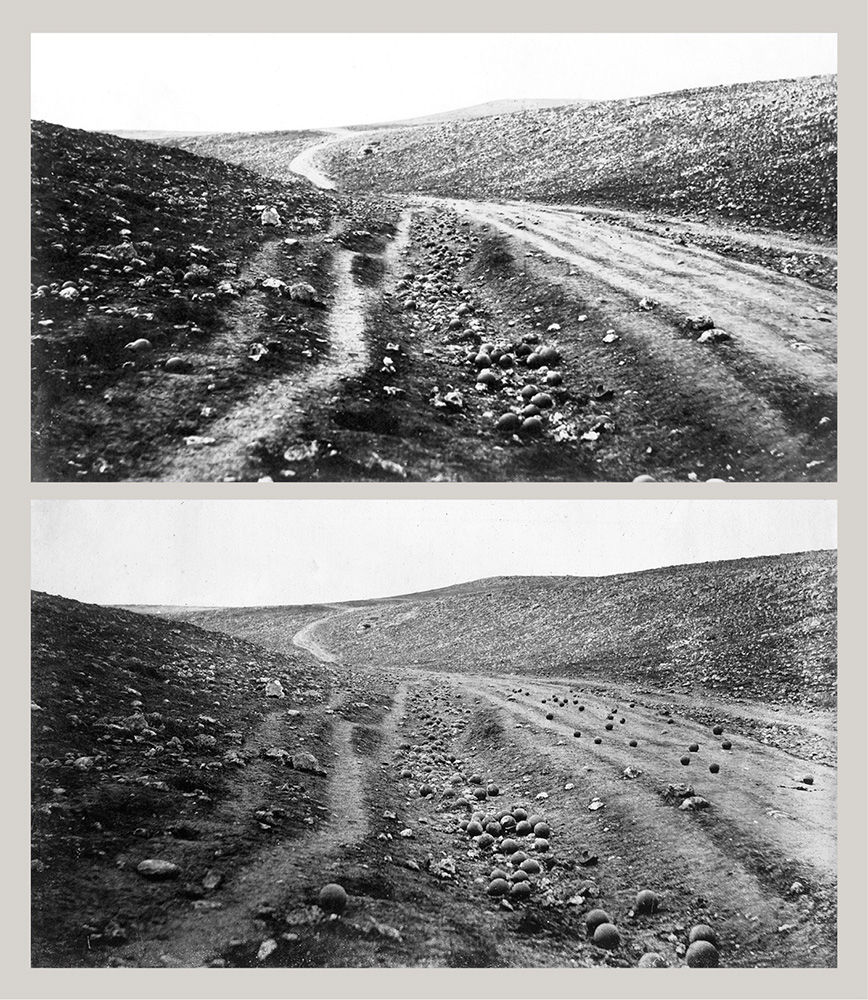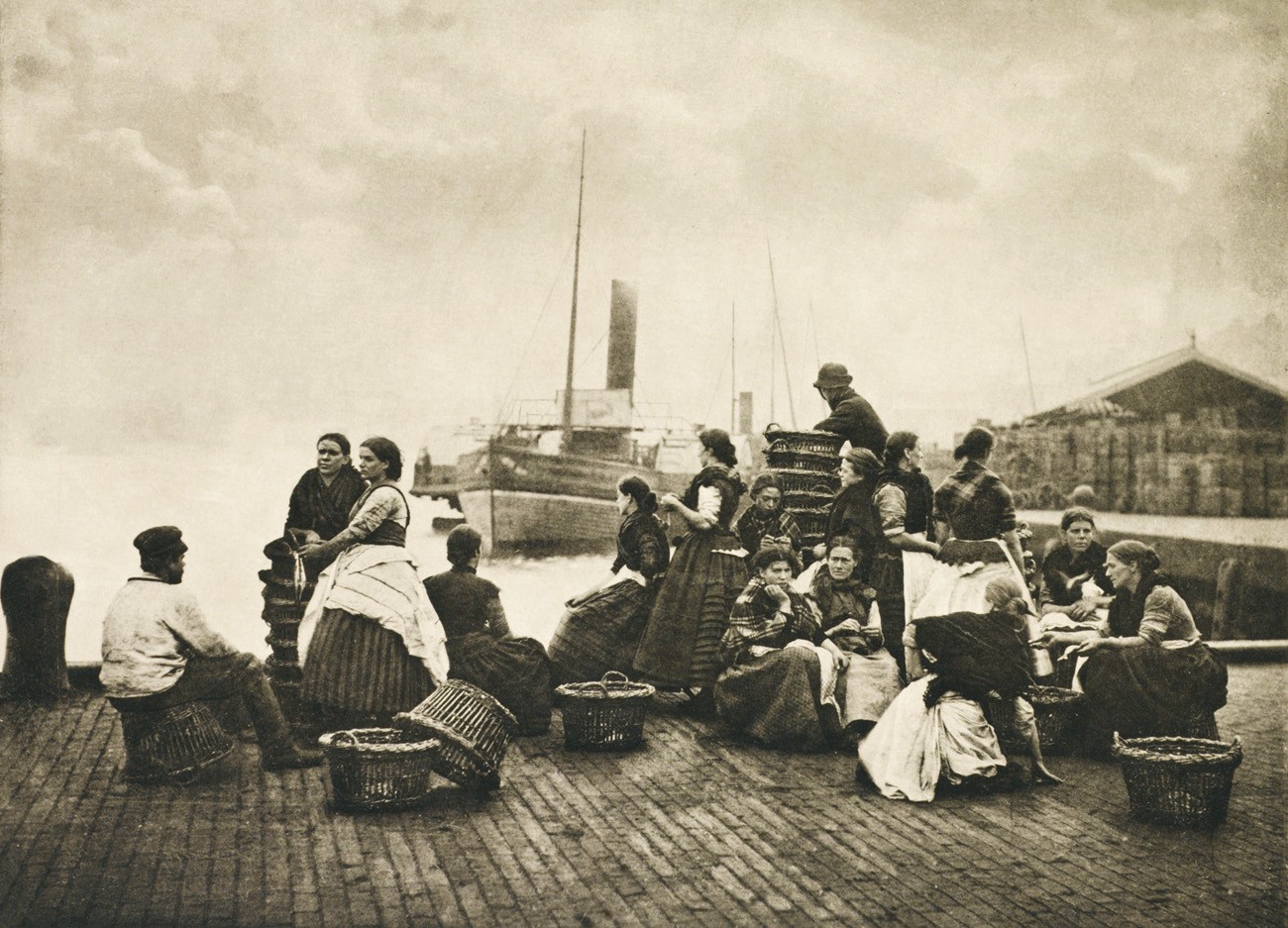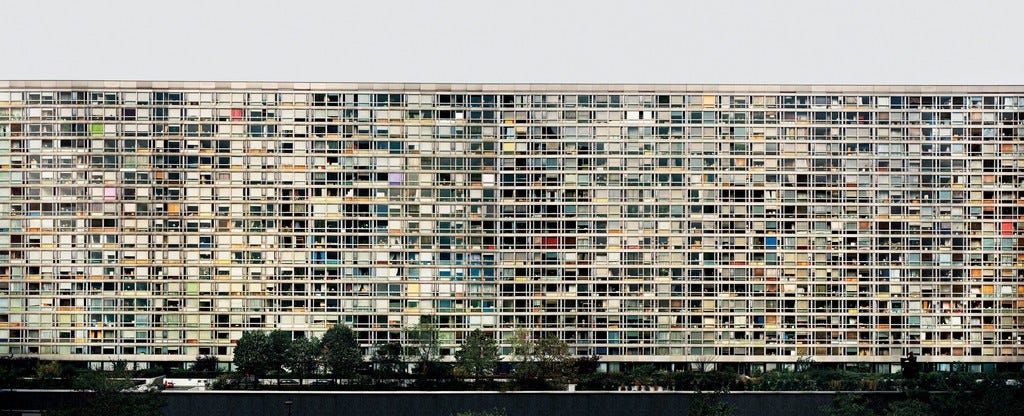“This medium, which we, for official purposes like passports and school IDs, trust to be an accurate picture of the world, has always been something that can be lent to fiction as well as to fact,” – Andreas Gursky (Nayeri F. 2018)
Introduction
Whether it’s a portrait for identification, a photograph in a news story, or an image from a historic event, photography is often used to present many aspects of our lives as fact. Many photographers have challenged this ideology by presenting their works as half-truths, deliberately misleading the audience. Andreas Gursky produces landscapes which have been digitally stitched together or altered, on the first viewing the audience is misled into believing the photograph is a realistic representation. However, on closer inspection, the viewer can see repeated patterns and subjects in the image which uncover it as forged and manipulated. There are, however, photographers who also strive to conserve the landscape in their work. Bernd and Hilla Becher captured images of industrial architecture and landscapes: including water towers, coal bunkers, gas tanks, factory facades, and blast furnaces. The Becher’s scientific approach to recording the subjects often found the images to always be captured at the same ‘objective’ angle and later arranged into grids to form typologies like that “of a botanist” (British Journal of Photography 2017: Line 55).
Both Gursky and the Bechers are associated with post-modernism. Gursky’s work revolves more on utilising new technologies such as Photoshop and image editing software to manipulate and stitch his landscapes together. With the industrial subjects often considered by viewers as mundane, the Becher’s typologies revolved around industrial architecture as their subjects. The typologies unintentionally challenging modernist works by ultimately favouring content over form, mood or a grand narrative. In my practical work, I intend on using Photoshop to stitch images together to create manipulated landscapes with as a response to Gursky. When responding to the Bechers, I intend on taking objective angle images of bunkers and defenses used during the German occupation of Jersey.
Historical Context
Photography has been the subject of manipulation by many photographers and in many photographic movements since the early years of its invention, whether the image has been altered using digital programs or having photos framed through using Roger Fenton, widely seen as the first official war photographer, documented the events of the Crimean war in the 1850’s. One of his most popular images, also one of the earliest photographs documenting warfare; ‘Valley of the Shadow of Death’ (lower), pictures a road littered with cannonballs from recent battles including the siege of Sevastopol. Many people back in Britain believed this to be an accurate representation of the battles which took place in the Crimean Peninsula. However, in 1981 a second photograph of the site taken by Fenton (upper) was uncovered; one with significantly fewer cannonballs. It is currently believed the second photograph was the original, and the first was staged by Fenton where extra cannonballs were added to the site “to make the scene appear more dramatic” (Van Erp, Bright 2019:77).

Manipulation has also been present in Pictorialism since the dawn of the movement, where photographers such as Peter Henry Emerson and the photographers from the Vienna camera club used ennobling processes such as gum or bromoil printing with the intentions of making their photographs look like paintings or drawings. Pictorialism was the first photography-specific movement originating in the 1880’s, within the first couple decades since the invention of the daguerreotype in the late 1830’s. When photography was first developed and widely accessible around the world, it was used to accurately record the surroundings. Eventually, photography was beginning to be used as an art-form. This, however, resulted in the masters and artists from other fields of art, such as; sculpture and fine art, rejecting photography. As an act of persistence, the Pictorialist movement was formed and Pictorialist photographers made sure to manipulate their photographs using the previously mentioned bromoil and gum printing, to make the images seem as if they were painted. Photographers adopted painting “styles and ideas to demonstrate parity” (The Art Story: paragraph 3, line 2) between fine art and photography, and to “increase it’s artistic impact” (The Art Story: paragraph 2, line 6).


Andreas Gursky
Manipulation is most notably associated with the post-modernist movement, where the use of new technologies is embraced in producing images. A well known photographer who primarily produces images through the use of digital programmes is Andreas Gursky. Gursky digitally stitches images together to create artificial landscapes with immense detail, “each one is always a world of its own, created” (Sawa). Gursky achieves this effect by photographing many zoomed in sections using two side by side large format cameras, one with a slight wide angle lens, and the other using a standard lens.

As a response to Gursky, I have used Adobe photoshop to merge 9 portrait images into a panoramic image

Hilla & Bernd Becher
j

As a response to the Becher’s typologies, I have used a more interesting subject: Fort Henry, located in Grouville

Conclusion
- Conclusion (250-500 words): Draw parallels, explore differences/ similarities between artists/photographers and that of your own work that you have produced
In conclusion, whether an image is artificially produced using digital software, cropped and reframed for a desired effect, or intended to be as objective as possible, manipulation is present in every aspect of photography. Although Gursky was taught by Bernd Becher, the styles between Gursky and the Becher’s are
- Bibliography:
Sawa , D. B. (2018), Andreas Gursky on the photograph that changed everything: ‘It was pure intuition’. Location of website: https://www.theguardian.com/artanddesign/2018/jan/18/andreas-gursky-each-photograph-is-a-world-of-its-own-best-photograph-salerno-harbour
Bright, S. and Van Erp, H.(2019). Photography Decoded. London: octopus Publishing House
British Journal of Photography. (2017), Hilla Becher on making art and a life with Bernd. Location of website: https://www.bjp-online.com/2017/10/hilla-becher-interview/
Nayeri, F. (2018), Andreas Gursky Is Taking Photos of Things That Do Not Exist. Location of website: https://www.nytimes.com/2018/01/29/arts/andreas-gursky-is-taking-photos-of-things-that-do-not-exist.html
The Art Story. Pictorialism Movement Overview. Location of website: https://www.theartstory.org/movement/pictorialism/
